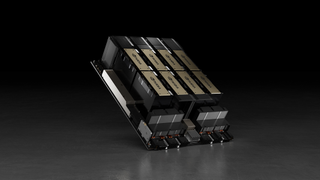Meta to deploy custom-designed Artemis AI processor alongside commercial GPUs
Artemis processor could save Meta hundreds of millions of dollars.

Meta is set to deploy its new custom-designed artificial intelligence (AI) processors in its datacenters this year, reports Reuters. The new system-on-chips are codenamed Artemis and are designed to support Meta's aggressive AI product rollout across its platforms and devices. Meanwhile, they are set to reduce Meta's reliance on Nvidia GPUs and control costs.
"We see our internally developed accelerators to be highly complementary to commercially available GPUs in delivering the optimal mix of performance and efficiency on Meta-specific workloads," a spokesperson for Meta told Reuters, confirming the plan to deploy the company's own chips.
Meta's Artemis processors are designed specifically to run inference workloads, those that are increasingly used across Meta's platforms like Facebook, Instagram, and WhatsApp, as well as in devices like Ray-Ban smartglasses. Deployment of Artemis processors will not only free Nvidia's popular H100 processors for AI training, but will also help to optimize power consumption of Meta's datacenters and therefore mitigate the high costs associated with running AI workloads. Meanwhile, Artemis is Meta's second AI processor, but the first one that will be deployed commercially.
According to Dylan Patel, the founder of SemiAnalysis, Meta's transition to using its custom chips could result in substantial savings, potentially reducing annual energy expenses by hundreds of millions of dollars and cutting down on third-party chip purchase costs by billions. Other hyperscalers, such as Amazon Web Services, Google, and Microsoft, are also developing and deploying their own AI and general-purpose processors in a bid to cut hardware costs and power consumption.
Meta's ambitions do not end with Artemis and inference acceleration. The company is reportedly developing a more sophisticated processor which could run AI training workloads, just like Nvidia's H100 GPUs.
Meta has been urgently expanding its computing resources to accommodate the demands of generative AI products, investing billions to gather specialized processors and tailor its datacenters for these workloads. In general, the initiative to develop in-house silicon lineup is meant to lessen Meta's dependence on Nvidia's processors. Yet, Meta has no plans to completely get rid of Nvidia's GPUs in its datacenters. Earlier this month Mark Zuckerberg, chief executive of Meta, said that his company would have 350,000 of H100 GPUs in its datacenters by the end of 2024.
Stay On the Cutting Edge: Get the Tom's Hardware Newsletter
Get Tom's Hardware's best news and in-depth reviews, straight to your inbox.

Anton Shilov is a Freelance News Writer at Tom’s Hardware US. Over the past couple of decades, he has covered everything from CPUs and GPUs to supercomputers and from modern process technologies and latest fab tools to high-tech industry trends.

Jailbroken coin-operated washing machines unlock unlimited free cycles and millions in funds — unpatched security vulnerability could also pose a fire hazard

China firms' AI breakthrough can meld GPUs from different brands into one training cluster — Baidu says new tech fuses thousands of GPUs together to help sidestep shortages
-
bit_user Reply
According to this, the CPU cores in their 1st generation silicon are RISC-V cores licensed from Andes:SirErr said:Does Meta work with any design house for this Artemis processor?
https://www.semianalysis.com/p/meta-custom-silicon-whats-old-is
However, it's pretty clear that the backend processing elements aren't from Andes. So, those would either be in-house or licensed from elsewhere.
That article doesn't cover details of the new silicon, at least in the non-subscriber "free" section.
Most Popular




